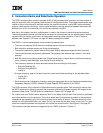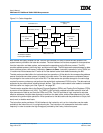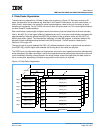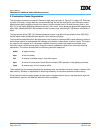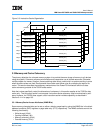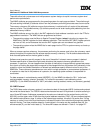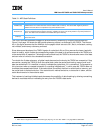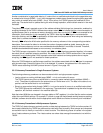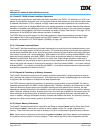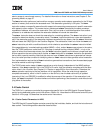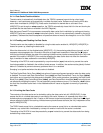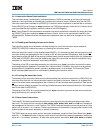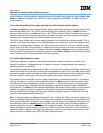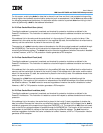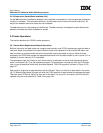
User’s Manual
IBM PowerPC 750GX and 750GL RISC Microprocessor
gx_03.fm.(1.2)
March 27, 2006
Instruction-Cache and Data-Cache Operation
Page 129 of 377
Another consideration is page table aliasing. If a store hits to a modified cache block but the page table entry
is marked write-through (WIMG = 1xxx), then the page has probably been aliased through another page table
entry which is marked write-back (WIMG = 0xxx). If this occurs, the 750GX ignores the modified bit in the
cache tag. The cache block is updated during the write-through operation, and the block remains in the modi-
fied state.
The global (GBL
) signal, asserted as part of the address attribute field during a bus transaction, enables the
snooping hardware of the 750GX. Address-bus masters assert GBL
to indicate that the current transaction is
a global access (that is, an access to memory shared by more than one device). If GBL
is not asserted for the
transaction, that transaction is not snooped by the 750GX. Note that the GBL
signal is not asserted for
instruction fetches, and that GBL
is asserted for all data read or write operations when using real-addressing
mode (that is, address translation is disabled).
Normally, GBL
reflects the M-bit value specified for the memory reference in the corresponding translation
descriptors. Care should be taken to minimize the number of pages marked as global, because the retry
protocol enforces coherency and can use considerable bus bandwidth if much data is shared. Therefore,
available bus bandwidth decreases as more memory is marked as global.
The 750GX snoops a transaction if the transfer start (TS
) and GBL signals are asserted together in the same
bus clock (this is a qualified snooping condition). No snoop update to the 750GX cache occurs if the snooped
transaction is not marked global. Also, because cache-block castouts and snoop pushes do not require
snooping, the GBL
signal is not asserted for these operations.
When the 750GX detects a qualified snoop condition, the address associated with the TS
signal is compared
with the cache tags. Snooping finishes if no hit is detected. If, however, the address hits in the cache, the
750GX reacts according to the MEI protocol shown in Figure 3-4 on page 128.
3.3.3 Coherency Precautions in Single-Processor Systems
The following coherency paradoxes can be encountered within a single-processor system.
• Load or store to a caching-inhibited page (WIMG = x1xx) and a cache hit occurs.
The 750GX ignores any hits to a cache block in a memory space marked caching-inhibited (WIMG =
x1xx). The access is performed on the external bus as if there were no hit. The data in the cache is not
pushed, and the cache block is not invalidated.
• Store to a page marked write-through (WIMG = 1xxx) and a cache hit occurs to a modified cache block.
The 750GX ignores the modified bit in the cache tag. The cache block is updated during the write-through
operation, but the block remains in the modified state (M).
Note that when WIM bits are changed in the page tables or BAT registers, it is critical that the cache contents
reflect the new WIM bit settings. For example, if a block or page that had allowed caching becomes caching-
inhibited, software should ensure that the appropriate cache blocks are flushed to memory and invalidated.
3.3.4 Coherency Precautions in Multiprocessor Systems
The 750GX’s 3-state coherency protocol permits no data sharing between the 750GX and other caches. All
burst reads initiated by the 750GX are performed as read with intent to modify. Burst snoops are interpreted
as read with intent to modify or read with no intent to cache. This effectively places all caches in the system
into a 3-state coherency scheme. The 4-state caches can share data amongst themselves but not with the
750GX.



